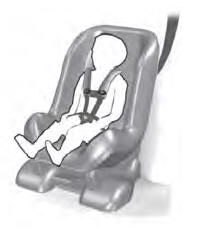Lincoln Aviator: Maintenance / Changing the Front Wiper Blades - Vehicles Without: Heated Wiper Blades
You can improve poor wiper quality by cleaning the wiper blades and the windshield.
Replace the wiper blades at least annually for optimum performance.
Removing the Front Wiper Blades

- Lift the wiper blade from the windshield
by holding the middle of the retainer.
Note: Do not hold the wiper blade to lift the wiper arm.
- Rotate the blade toward the windshield by gripping it under the connector until a “click” sound is heard and the wiper blade position is fixed.
- Push the blade release button on top of
the connector and pull the blade from
the arm.
Note: Make sure that the wiper arm does not spring back against the glass when the wiper blade is not attached.
Installing the Front Wiper Blades
- Line up the wiper blade, water and electrical connectors with the receptors on the wiper arm by lifting the arm from the windshield.
- Slide the blade into the connector until a “click” sound is heard.
- Rotate the blade toward the wiper arm by gripping it under the connector until a “click” sound is heard. Verify that the blade has rotation.
Note: Make sure that the wiper blade locks into place.
 Washer Fluid Check. Fuel Filter. Checking the Wiper Blades
Washer Fluid Check. Fuel Filter. Checking the Wiper Blades
Washer Fluid Check
WARNING: If you operate your
vehicle in temperatures below 41.0°F (5°C),
use washer fluid with antifreeze protection.
Failure to use washer fluid with antifreeze
protection in cold weather could result in
impaired windshield vision and increase
the risk of injury or accident...
 Changing the Front Wiper Blades - Vehicles With: Heated Wiper Blades
Changing the Front Wiper Blades - Vehicles With: Heated Wiper Blades
Replacing the Rubber Insert
Remove the wiper blade.
Use a suitable tool, for example a
screwdriver, to carefully move the tab on
the end cap.
Pull the end cap to release the rubber
insert
To install, reverse the removal procedure...
Other information:
Lincoln Aviator 2020-2025 Service Manual: Removal and Installation - Rocker Panel Inner Reinforcement
Special Tool(s) / General Equipment Resistance Spotwelding Equipment Spherical Cutter Hot Air Gun Air Body Saw 8 mm Drill Bit MIG/MAG Welding Equipment Spot Weld Drill Bit Locking Pliers Materials Name Specification Metal Bonding AdhesiveTA-1, TA-1-B, 3M™ 08115, LORD Fusor® 108B - Seam SealerTA-2-B, 3M™ 08308, LORD Fusor® 803DTM - Flexible Foam Repair3M™ 08463, LORD Fusor® 121 - Removal WARNING: Electric vehicles damaged by a crash may have compromised high voltage safety systems and present a potential high voltage electrical shock hazard...
Lincoln Aviator 2020-2025 Service Manual: Removal and Installation - Fuel Pump Driver Module (FPDM)
Removal All Vehicles NOTE: The fuel pump driver module is located on the bottom side of the left front floor panel, above the sound insulation panel. For fuel pump driver module component location view. Refer to: Fuel Charging and Controls - Component Location (303-04A Fuel Charging and Controls - 3...
Categories
- Manuals Home
- Lincoln Aviator Owners Manual
- Lincoln Aviator Service Manual
- USB Port and Power Point Locations
- Body and Paint
- Keyless Entry
- New on site
- Most important about car
Child Seats

Use a child restraint (sometimes called an infant carrier, convertible seat, or toddler seat) for infants, toddlers and children weighing 40 lb (18 kg) or less (generally four-years-old or younger).
Using Lap and Shoulder Belts
WARNING: Do not place a rearward facing child restraint in front of an active airbag. Failure to follow this instruction could result in personal injury or death.
